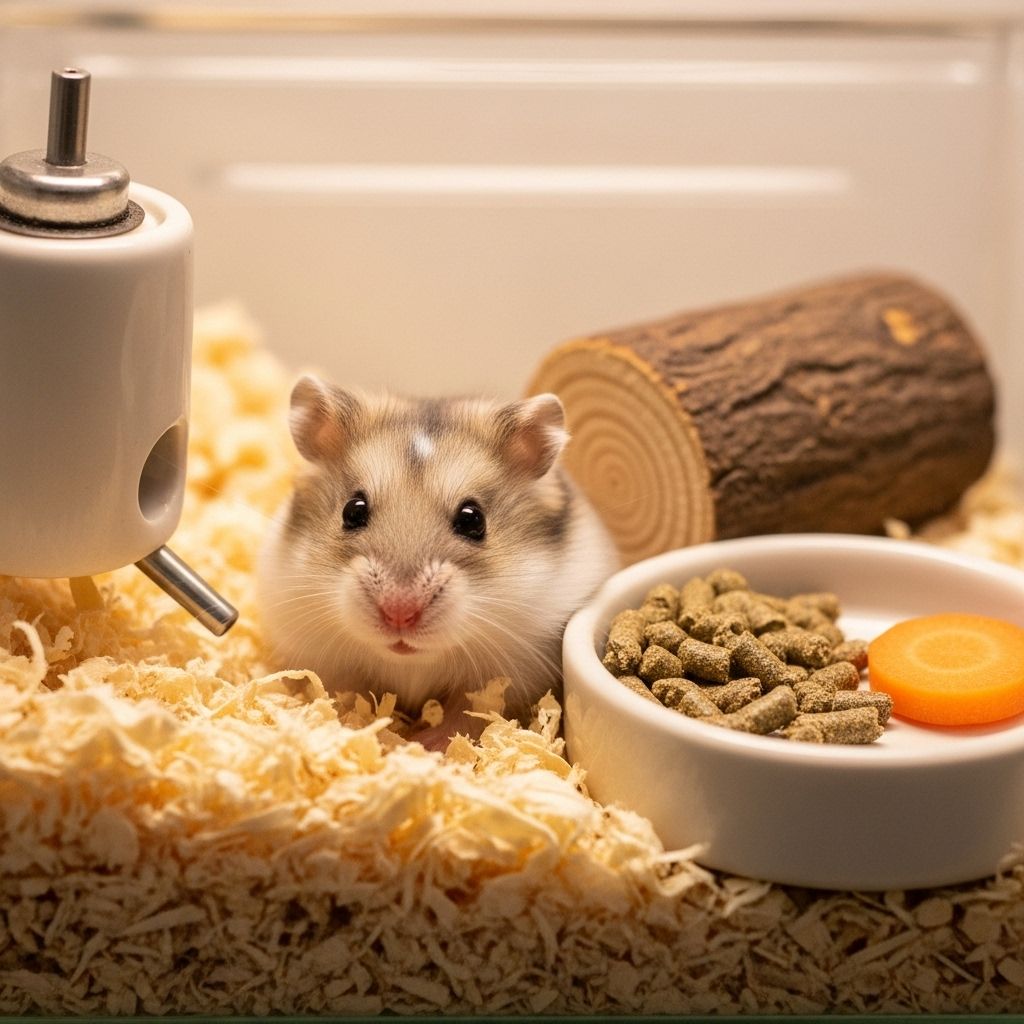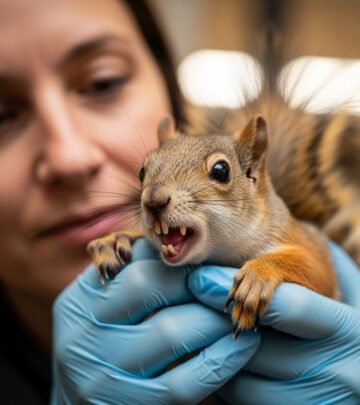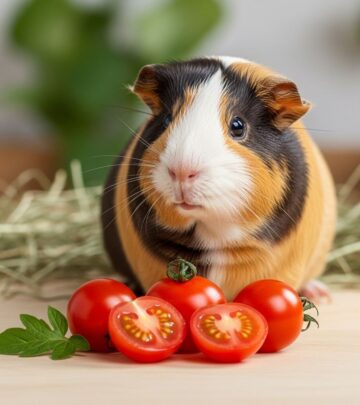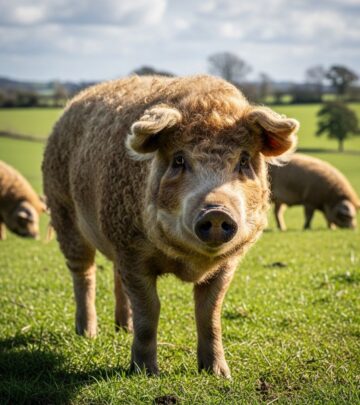Baby Hamster Care: Essential Guide To Raising Healthy Pups
Learn how to care for a pregnant hamster, help newborns thrive, and keep the mother healthy and calm.

Image: HearthJunction Design Team
What to Do If Your Hamster Has Babies: The Complete Guide
If you discover your hamster is pregnant or has unexpectedly given birth, it’s important to know how to care for the mother and her pups to ensure their health and safety. From preparing the habitat to feeding tips and what to watch for, this guide provides everything you need to raise a healthy hamster family.
Understanding Hamster Pregnancy and Birth
Hamsters can breed swiftly and may produce a litter before you even realize they’re pregnant. Here’s what to look for and how to prepare:
Signs of a Pregnant Hamster
- Nest Building: Expectant mothers often start building elaborate nests using bedding and available materials.
- Pear-Shaped Body: Pregnant hamsters develop a noticeable pear shape and gain weight.
- Visible Nipples: The nipples become more prominent.
- Aggressive Behavior: Increased defensiveness and irritability are common maternal instincts.
- Food Hoarding: Preparing for the pups, mothers will store more food than usual.
Gestation Period
- Syrian Hamsters: ~16 days.
- Chinese and Russian Dwarf Hamsters: 18–21 days.
- Roborovski Hamsters: Up to 30 days.
Before the Birth: Preparing for Baby Hamsters
Proper preparation will help ensure a safe, low-stress environment for the mother and her babies:
- Clean the Cage: Clean the habitat thoroughly about 5 days before the expected birth, but keep a small portion of the old bedding to maintain familiar scents and reduce stress.
- Increase Nesting Material: Provide plenty of shredded tissue and soft bedding. This helps the mother build a warm, secure nest for the pups.
- Remove Dangerous Accessories: Take out wheels, toys, sand baths, litter boxes, or anything that could trap or injure fragile babies.
- Separate the Male: Move any male hamster to a separate cage to prevent further breeding and reduce the risk of aggression.
- Quiet Environment: Locate the cage in a calm area with minimal noise and disturbances during this sensitive time.
Feeding a Pregnant and Nursing Hamster
The mother’s nutrition is vital for the health of both her and her litter:
- High-Quality Diet: Provide a premium hamster mix, rich in protein and healthy fats.
- Protein-Rich Foods: Supplement with small amounts of unseasoned, hard-boiled egg, pieces of cooked chicken breast, cheese, or wheat germ. Avoid overfeeding protein, especially close to labor, as excess can cause complications.
- Fresh Water: Ensure constant access to clean water, replacing it daily.
- After Birth: Continue protein-rich supplementation to help the mother regain strength and produce nutritious milk for her pups.
What to Do When the Babies Arrive
The moment of birth is sensitive. Minimizing stress and disturbance is crucial during the first week:
- Leave Mother and Babies Alone: Resist the urge to interact with newborns. Let mother and babies remain undisturbed for at least 7 days, especially with first-time mothers.
- Avoid Handling: Do not touch the babies, as your scent may confuse the mother and put the pups at risk. If absolutely necessary, use a spoon instead of your hands to move a pup, but this is rarely needed—the mother will retrieve stragglers herself.
- Keep Visits Short and Quiet: Move quietly and calmly around the cage. Keep feeding and watering efficient; avoid prolonged observation near the nest to minimize stress.
- Expect Protective Behavior: The mother may act aggressively or defensively—this is normal. Avoid provoking her, and do not attempt to handle her unless needed.
Spot Cleaning and Cage Maintenance
Hygiene is important, but early interference can be risky. Here’s how to balance cleanliness:
- Minimal Cleaning: For the first week, only spot clean heavily soiled corners or wet spots. Avoid changing bedding or moving the nest itself.
- After 7–10 Days: Once babies have fur and start moving around, you can carefully clean more of the cage, but always leave some of the original bedding to preserve the mother’s comfort.
Signs of Trouble and When to Intervene
Though rare, complications may arise. Watch for these signs and act quickly if something seems wrong:
- Labor Complications: Difficulty delivering, prolonged straining, heavy bleeding, or visible distress may signal a pup is stuck. Veterinary intervention may be needed urgently.
- Maternal Rejection: In rare cases, the mother may ignore, attack, or even cannibalize pups—often due to stress, perceived threats, or illness.
- If You Must Hand-Rear: If a mother hamster abandons or is separated from her pups, they will require feeding with a puppy milk replacer (like KMR or Esbilac) using a soft paintbrush or small sponge every 1–2 hours. Pups must also be gently stimulated to defecate after each feeding. This is very challenging and should only be done if absolutely necessary.
Growth and Development of Baby Hamsters
Baby hamsters experience rapid changes in their first weeks of life. Here’s what to expect:
| Age | Development Milestones |
|---|---|
| Day 0 | Pups are born hairless, blind, and totally dependent on their mother. |
| Day 7–10 | Fine fur begins to grow; babies start moving around more. |
| Day 14 | Eyes open; babies begin sampling solid foods. |
| Day 21 | Pups are weaned and can be separated if needed. |
Weaning and Separating the Babies
Proper weaning prevents unwanted breeding and ensures each hamster receives appropriate care:
- Weaning Age: At about 21–28 days (when they are eating solid foods and independent), babies should be separated from the mother.
- Gender Separation: Sort females and males into different enclosures by four weeks to prevent early pregnancies.
- Monitor Health: Check each youngster for signs of illness, such as lethargy, weight loss, or abnormal growth. Provide individualized care if required.
Frequently Asked Questions (FAQs)
How soon after birth can I handle baby hamsters?
Wait at least 7 days, preferably until the pups have some fur and are moving independently. Early handling risks rejection by the mother.
What should I do if the mother hamster abandons her babies?
If the mother ignores or attacks the pups, you may need to hand-feed with a milk replacer (KMR/Esbilac) every 1–2 hours and keep them warm. Consult a veterinarian or an experienced breeder for guidance.
Can I leave the father hamster with the mother and babies?
No. Separate the male before the birth to prevent further pregnancies and possible aggression toward the pups or mother.
How can I tell if my hamster is pregnant?
Look for nest building, noticeable weight gain, a pear-shaped body, prominent nipples, increased aggression, and excessive food hoarding.
What foods are safe for pregnant or nursing hamsters?
Offer a premium hamster diet, plus small amounts of protein-rich foods like unseasoned hard-boiled egg, lean cooked chicken breast, or wheat germ. Avoid excessive protein, and always provide fresh water.
Tips for a Healthy Hamster Family
- Handle the mother as little as possible during pregnancy and the first week after birth.
- Keep the cage in a quiet, secure area away from loud noises and excessive activity.
- Remove any aggressive adults immediately to prevent injuries or fatalities in the litter.
- Monitor the nest’s warmth and cleanliness, but never disturb it unless absolutely necessary.
- Document birth dates and milestones for each litter to track their development.
When to Call a Veterinarian
If you notice any of the following, seek veterinary help immediately:
- Mother is struggling to give birth, or has been in labor for over an hour without producing pups.
- Heavy bleeding, visible distress, or signs of infection in the mother.
- Pups that are cold, unresponsive, or not nursing.
- Prolonged aggression or cannibalization beyond the first few days—this can signal medical or environmental problems.
Conclusion
Raising baby hamsters is a rewarding but delicate experience. Providing a safe, calm, and nourishing environment gives both mother and young the best start possible. Most importantly, patience and minimal interference during the early days are key to their survival and healthy development. If in doubt, seek advice from a knowledgeable veterinarian or a professional breeder specializing in small pets.
References
- https://www.thesprucepets.com/what-should-you-do-if-your-hamster-has-babies-1238930
- https://ontariohamsters.ca/education/pregnancy-crash-course.html
- https://www.merckvetmanual.com/all-other-pets/hamsters/breeding-and-reproduction-of-hamsters
- https://allcritterspetcare.com/how-to-properly-care-for-baby-hamsters/
- https://philippinehamsterkeepers.com/hamster-care/pregnancy-crash-course/
Read full bio of Srija Burman












